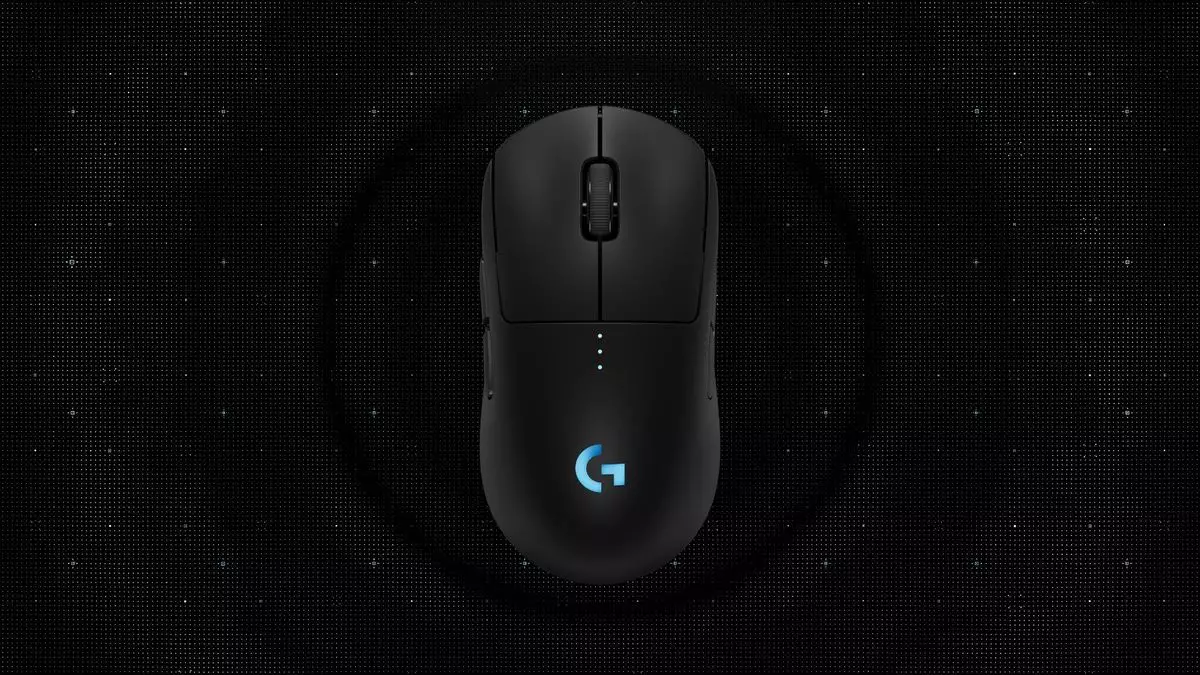In the fast-paced world of gaming peripherals, advancements in technology often dictate an edge in competitive play. With its latest announcement, Logitech continues to set industry standards. The introduction of the G Pro X Superlight 2 Dex Lightspeed serves as a beacon for gamers looking for performance enhancements in their hardware. But what’s truly exciting isn’t just the new mouse—it’s how Logitech plans to revive previous models by integrating advanced features akin to its newly released devices.
Logitech’s decision to equip its existing gaming mice with the Hero 2 sensor is a strategic move that illustrates a commitment to customer satisfaction. While the G Pro X Superlight 2 boasts a DPI (dots per inch) capability of 44,000 and a maximum tracking speed of 888 IPS (inches per second), Logitech is granting its older mice similar functionality through a pivotal software update. This accessibility means that existing owners can enjoy cutting-edge specifications without having to invest in new hardware. As of October, these old models will mirror the performance enhancements of the latest offerings, underscoring Logitech’s dedication to its fan base.
The significance of DPI and IPS cannot be overstated in the context of gaming mice. DPI measures how sensitive the mouse is, where a higher number indicates greater sensitivity, allowing for precise movements vital to competitive gaming. Conversely, IPS refers to the tracking speed, highlighting a mouse’s ability to effectively translate rapid hand movements into on-screen actions. The broader range of DPI options after the upgrade will empower gamers with a customizable sensitivity tailored to their playing style, and a higher IPS rating ensures that even the swiftest movements are registered accurately.
An interesting point of discussion revolves around the launch of the G Pro X Superlight 2 Dex, which presents an alternative for those seeking a unique grip style. The Dex’s design is arguably less ambidextrous, tailored more for a specific ergonomic preference—this could prove a double-edged sword. While the design caters to a segment of gamers, it might alienate others who prefer the older model’s versatility. In terms of performance, the Dex also boasts an impressive 8K polling rate—an attractive yet perhaps unnecessary feature for most gamers, as it can lead to excessive battery drain. This trade-off is where users must consider if the increase in performance outweighs the cost of potentially reduced usability in longer gaming sessions.
Logitech’s approach of enhancing existing products while simultaneously releasing new models presents an intriguing dynamic in the gaming hardware market. It offers current users a chance to revitalize their experience without incurring additional expenses. However, it also begs the question of whether newly released models will genuinely entice strategy-focused consumers. The decision to market both the upgraded models and the new Dex concurrently could create confusion regarding which product fits the gaming needs best.
The enhancements made to Logitech’s Hero 2 sensor represent a significant step towards providing gamers with customizable, high-performance equipment. The seamless transition of features to older models not only rewards loyal customers but also sets a precedent for innovation within the gaming peripheral industry. As technology evolves, Logitech stays ahead of the game by prioritizing functionality and user satisfaction. Moving forward, avid gamers will have a wealth of options tailored to their specific needs, ensuring that their gear keeps pace with their gaming ambitions. The update will solidify Logitech’s standing as a leader in the gaming mouse arena, continuously adapting to and shaping the landscape.

